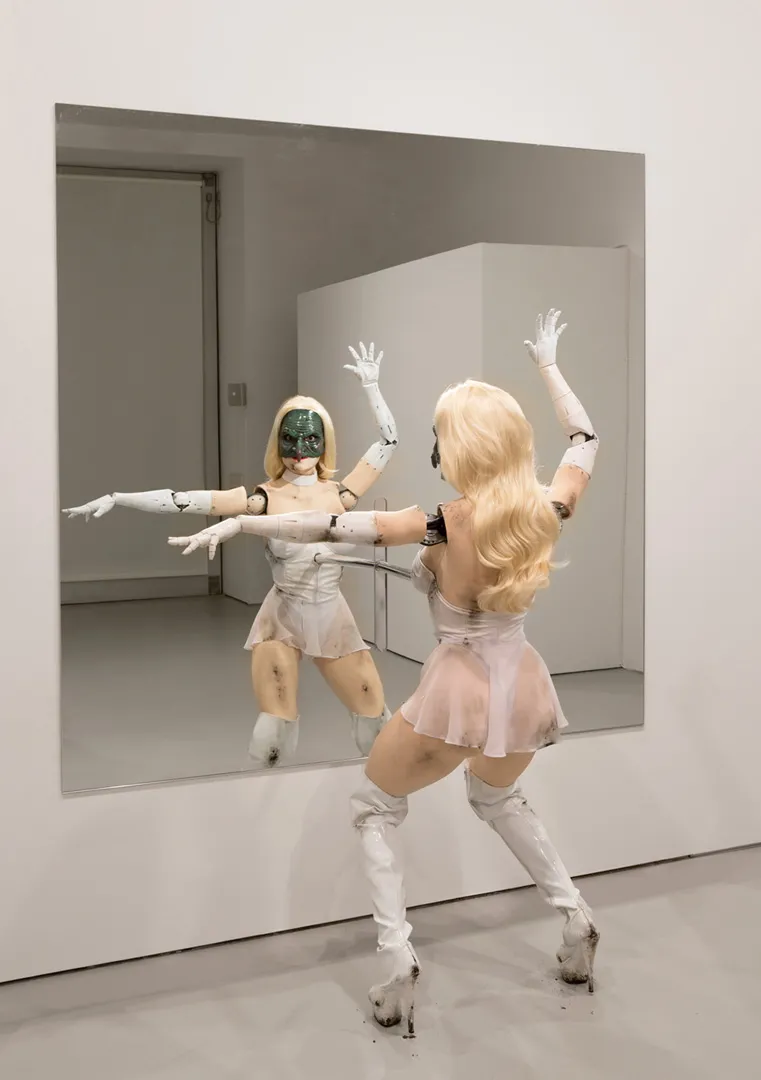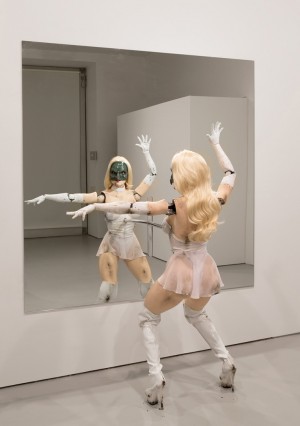
(Female figure)
About This Artwork
“ I was mostly just interested in the physicality of what I’d seen in the
animatronic field, and I was also interested in making a sculpture
that had the potential to be chronological or structural in the same
way a video is. My hope is that the work dips in and out of spectacle.”
—Jordan Wolfson
Jordan Wolfson’s (Female figure), 2014, is an immersive environment
that features a robotic sculpture. For twelve minutes, the robot gives
monologues and dances to pop songs. Startling and unnerving, the
work raises the specter of misogyny and exposes fissures in pop
culture. It challenges the ways women are represented, and the
ways images of women are consumed.
The sculpture resembles a hypersexualized female, but it also complicates
such a reading and evades easy consumption. In a brightly
lit room that is more sterile than sensual, the robot wears a witch
mask and is covered in black smudges. The figure faces a mirrored
wall to which it is attached by a rod piercing its torso. Traditionally,
art is a one-directional experience: you alone observe the artwork.
Here, however, the robot uses facial recognition software to “look
at” the viewer, returning your stare. This may feel like the sculpture
is objectifying you, treating you like an object.
(Female figure) inverts the male gaze, a phrase coined by film
theorist Laura Mulvey in 1975. The male gaze describes a cultural
condition in which all viewers—regardless of gender—assume heterosexual
male desires. In this state, the female is passive while the
male is active, and women are looked at for the pleasure of men. In
this artwork, however, the depiction of a woman—a classic theme
in art—is anything but passive. (Female figure) confronts the viewer,
while the viewer endures its stare. Further, the robot projects the
artist’s male voice. It whispers, “My mother is dead. My father is
dead. I’m gay. I’d like to be a poet. This is my house.” (Female figure)
aggressively challenges assumptions about gender, sexuality,
and even our status as human subjects.
